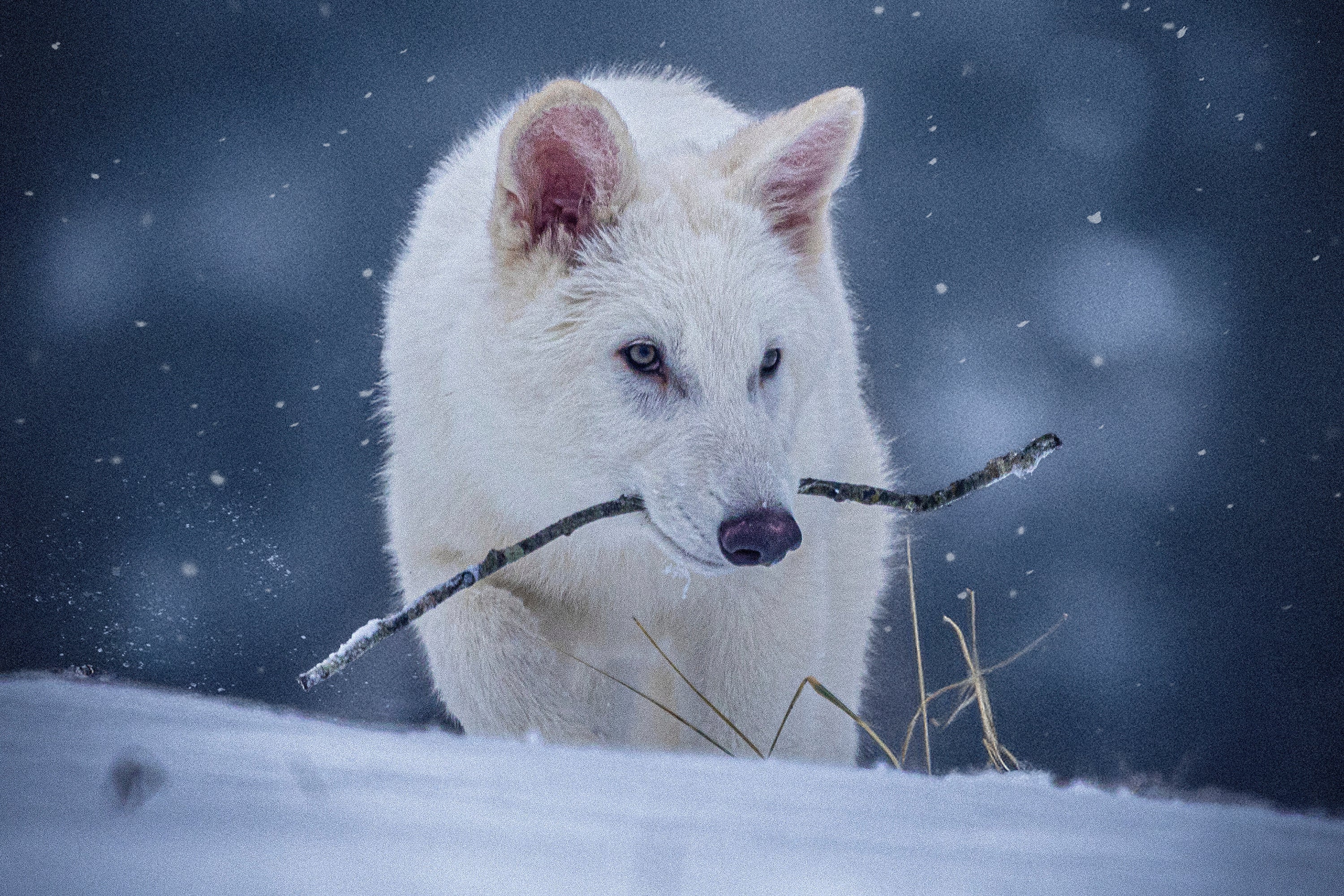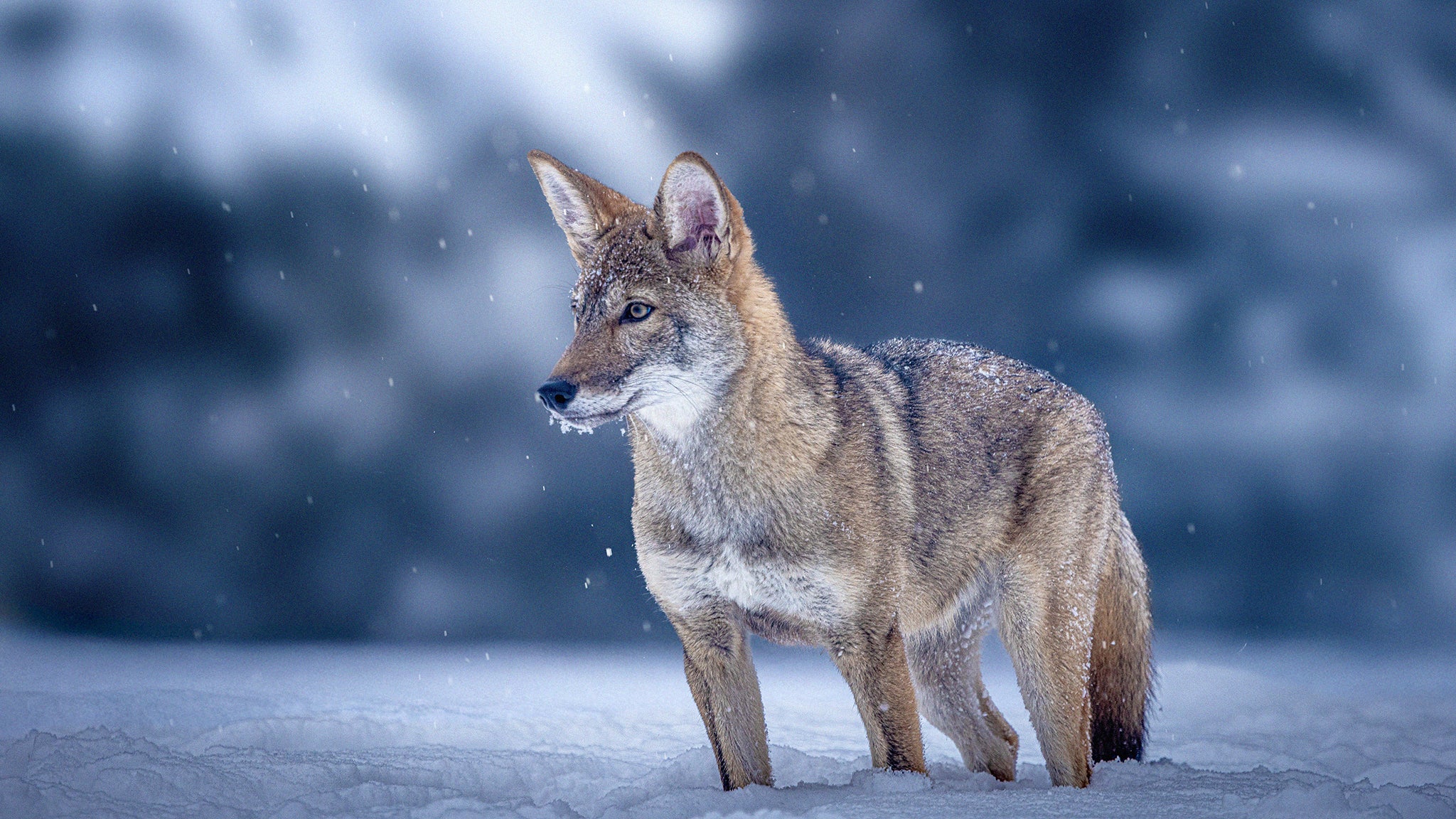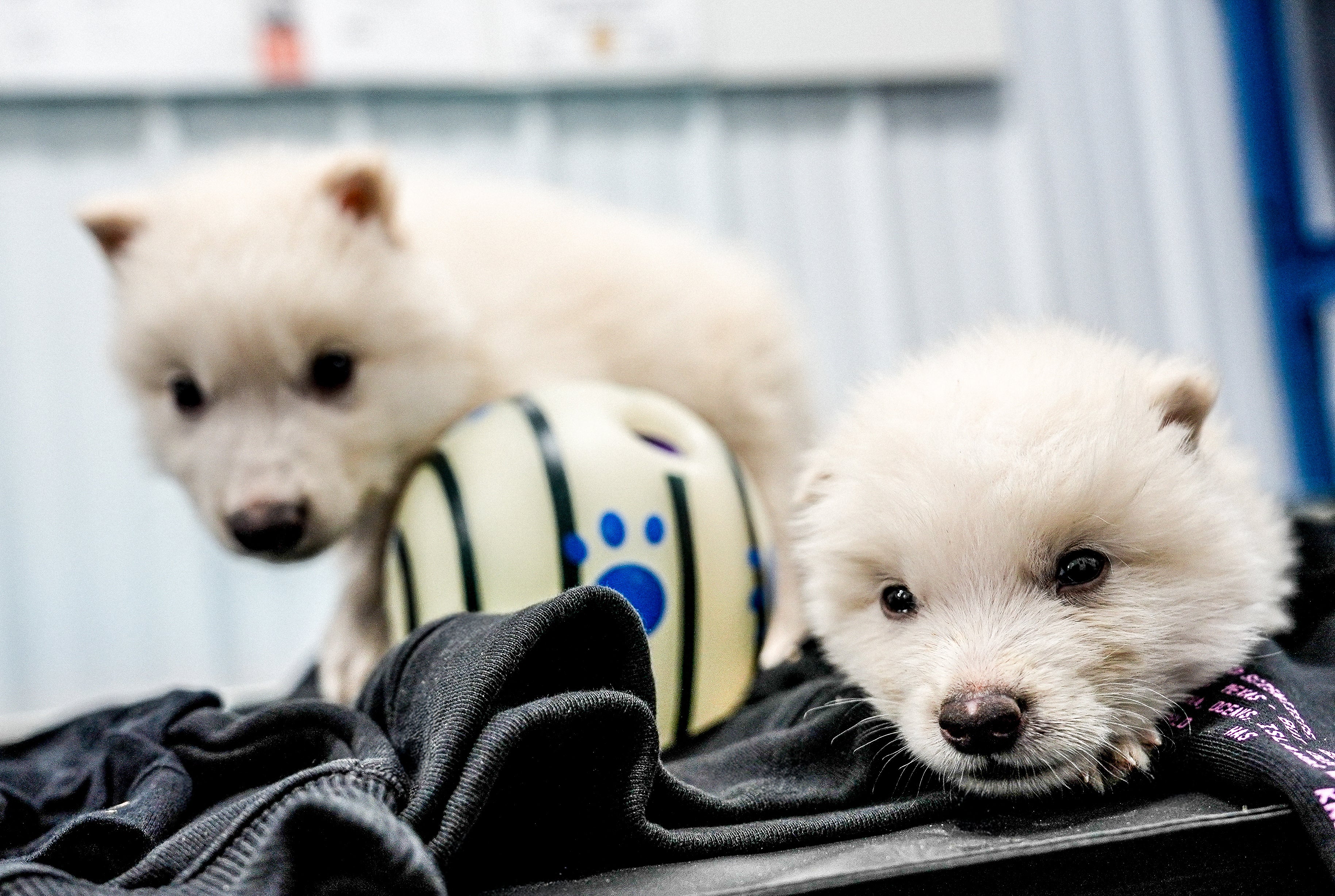Call them dire wolves. Don’t call them dire wolves. Colossal Biosciences, the biotechnology company from Dallas, Texas, that wants to de-extinct the woolly mammoth and dodo, doesn’t care what you call Romulus, Remus, and Khaleesi – just that they’re here.
“We’re going to call them de-extinct dire wolves. You can call them proxy dire wolves or Colossal dire wolves. Or, you can call them gray wolves with 20 edits that recreate functional dire wolves in the ecosystems of today,” Colossal’s chief scientist and evolutionary biologist Dr. Beth Shapiro told The Independent.
Colossal, which calls itself “the world’s first and only de-extinction company,” says that de-extincting the dire wolves is a stride forward on the treadmill of scientific progress — but frustrated conservation groups say the gene-edited wolves are a part of the problem.
The Colossal dire wolves were made using gray wolves’ genetic information and by extracting ancient DNA from fossils found in Ohio and Idaho. But, in the wild, gray wolves are struggling. They’re being hunted, and have lost their natural habitat.
“It’s frustrating that there’s time and energy devoted to bringing back an animal when we have gray wolves already,” Regan Downey, the Wolf Conservation Center’s director of education, told The Independent.
A keystone species that helps to keep the balance in their ecosystem, gray wolves stand to lose federal protections. The House Natural Resources Committee passed a bill that would remove the animals from the endangered species list. “Let’s make sure that they’re not going extinct,” Downey urged.

Many conservationists raise valid ethical concerns when it comes to the whole concept of de-extinction. The dire wolves are coming to a greatly changed planet, stricken by the human condition: climate change, pollution, and much of the issues that have led to our biodiversity crisis and the sixth mass extinction. Multiple studies have painted a bleak outlook for Earth’s wildlife in the coming decades, with some more adapted to a warming or changing world than others.
Dire wolves have obviously not adapted to this changing world, and Downey noted that it was “upsetting” the de-extinct wolves were created without a place in the American landscape for them.
Through widespread criticism about its projects, Colossal asserts that conservation is at the heart of its decision-making and that its work represents an opportunity to improve stability in ecosystems.
In its announcement of the dire wolves’ birth, other fascinating news did not get the same headline attention: Colossal had cloned two litters of red wolves.
Red wolves are the most critically endangered wolf in the world; only 16 of them still exist in the wild. Currently 270 red wolves are living in captivity, with plans for them to be released.
Wolf Wildlife Center senior research scientist Dr. Joseph Hinton said in a statement that the immediate concern is for the survival of red wolves is threats like cars or hunters, which cloning doesn’t protect them from. “Cloning is a solution in search of a problem that doesn’t exist for red wolves,” he said.

The new litters of red wolves may look more like dire wolves were believed to have appeared tens of thousands of years ago. In previous renderings, dire wolves are shown with reddish brown coats and gnashing teeth. They were not just ancient versions of gray wolves – although a pre-print Colossal’s scientists published this week suggests they were much more “wolf-like” than previously thought. As big as the largest of the modern gray wolves, the carnivorous ancient canids that roamed the Americas were closely related to today’s jackals. They feasted on horses, ground sloths, bison, and camels. Their life span, however, is similar to modern wolves: typically under a decade.
“Dire wolves are very much the dominant species of canine during the Ice Age. And, at the end of the Ice Age around 13,000 years ago, dire wolves became extinct,” explained Los Angeles County Natural History Museum Vertebrate Paleontology Curator Dr. Xiaoming Wang, “possibly because their prey are disappearing which was maybe related to humans.”
He said the cause of their extinction is controversial, and tied to climate change and species competition. When they disappeared, the gray wolf took over.

But the Colossal’s dire wolves will be different than their forefathers in all sorts of ways, says Wang.
“The three individuals that they managed to clone probably won’t have the kind of behavior or repertoire that a normal dire wolf would have because a lot of the behavioral things are taught through parental care,” he noted.
There are other aspects of the de-extinct dire wolves that may seem more likely in a Games of Thrones episode than a museum. The de-extinct dire wolves have a larger and stronger body and fuller coat. They’re also white.
Shapiro said that when they extracted DNA from the fossil they found and studied their genetic information, they saw that they had light-colored coats. Using edited cells that were implanted into surrogate dog mothers, Colossal was able to imbue those features onto six-month-olds Romulus and Remus, and their three-month-old sister Khaleesi.

The wolves are kept on a secure ecological preserve that spans 2,000 acres in a secret location. Romulus and Remus are bigger than when they made those little howls in a video shared by Colossal. Now nearly fully sized, they playfully tramp around a grassy enclosure, unaware of the ethical controversies their births have created.
So, is what Colossal is doing good or bad? The reality is pretty murky. To conservationists, ultimately, the de-extinct dire wolves are a distraction from the gray and red wolves that need immediate help, funding, and support.
Shapiro, who was part of the team that first retrieved dire-wolf DNA from fossils in 2021, said recent actions to revoke protections of gray wolves are “terrible” and “not what we need.” Even so, she said that the pace of change in the world is faster than evolution by natural selection can keep up with, and that the future of biodiversity conservation “has to include some aspect of these biotechnologies.”
Colossal’s chief animal officer Matthew James says their efforts are complementary to species conservation work.
“I think one thing that’s been lost so far … is this idea that we’re pitching these technological platforms as a silver bullet solution for conservation, and that’s not the case,” he said.









